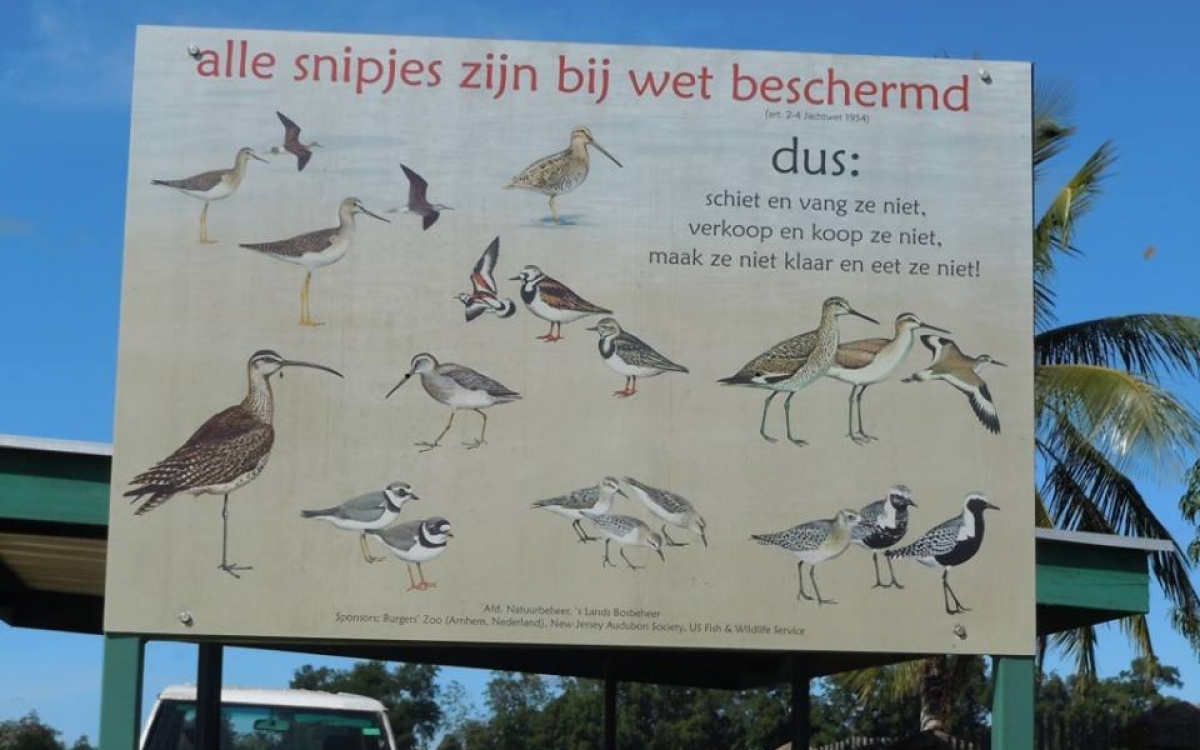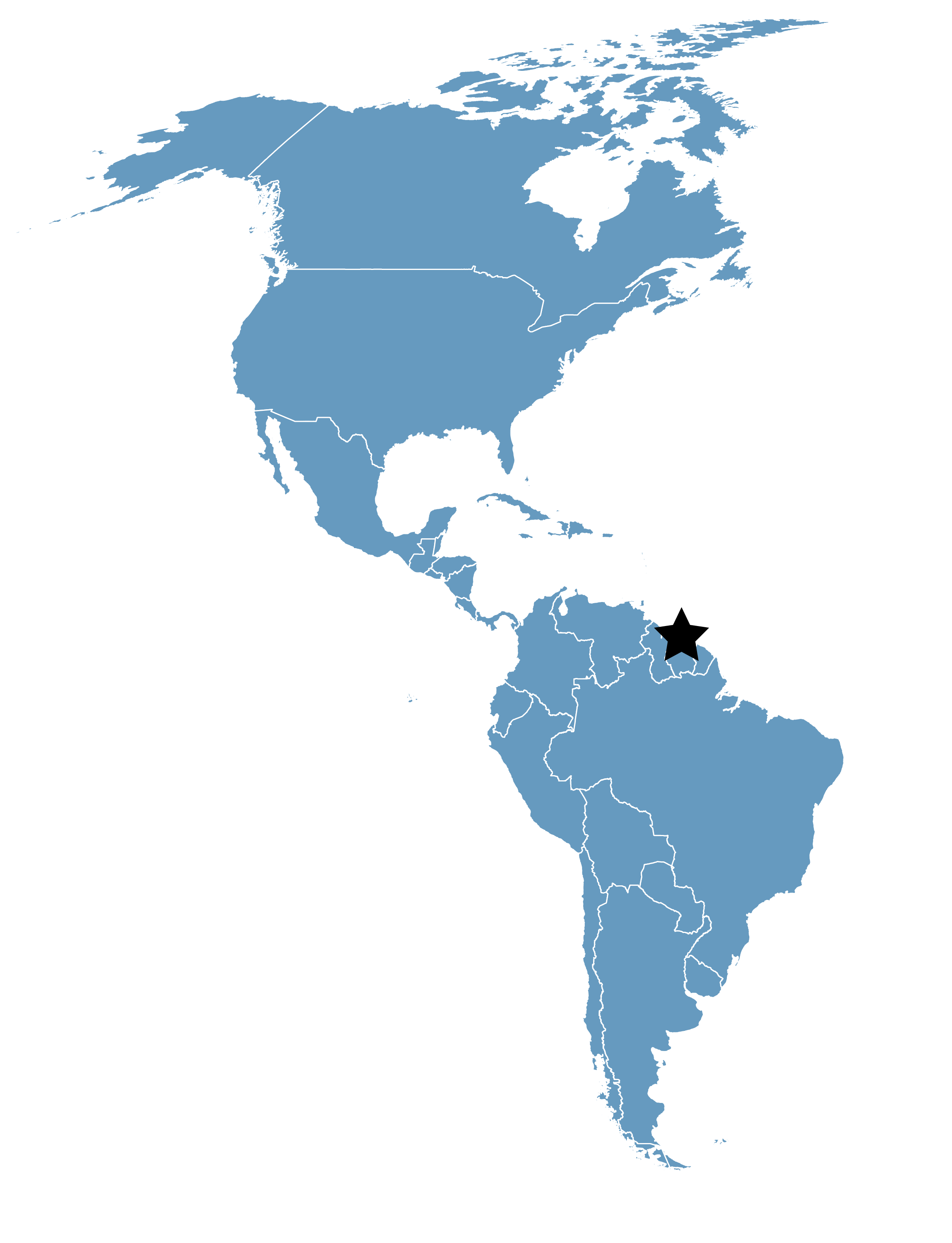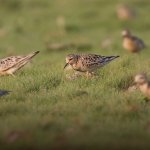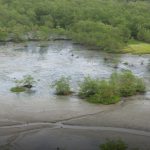Bigi Pan
Location
Nickerie, Suriname
Category
Hemispheric
Basis for Designation
Supports more than 500,000 shorebirds annually.
Size
68,320 hectares (168,822 acres)
Date Designated
March 1989
Site Owner
Ministry of Physical Planning, Land Use, & Forest Management (RGB by its Dutch acronym)
Overview
Bigi Pan is a federally protected Multiple Use Management Area (MUMA) under the jurisdiction of the Ministry of Physical Planning, Land Use, and Forest Management (RGB by its Dutch acronym). It is managed by the Nature Conservation Division (NCD) within the Ministry’s Forest Service (LBB by its Dutch acronym). As a multiple-use management area, is serves functions besides wildlife protection such as fishing and recreation. Bigi Pan provides a nursery for seafish, filters water, and protects the mainland from rising seawater levels and storms. High biodiversity at this site makes it especially rewarding for recreation and tourism.
Bigi Pan is part of an Endemic Bird Area due to the common occurrence of three range-restricted species: Guyanan Piculet, Blood-colored Woodpecker, and Rufous Crabhawk. The mudflats and the swamps also provide important habitat for numerous migratory shorebird species that breed in North America.
The site supports hundreds of thousands of migratory shorebirds each year—Semipalmated Sandpiper (Calidris pusilla) most abundantly. However, recent surveys by New Jersey Audubon Society and partners have found that the population wintering in northeastern South America has declined by as much as 80% in the last 30 years.

One of several signs (in Dutch) raising public awareness that all shorebirds (“snippies”) are protected, and that shooting, eating, or disturbing them is illegal. Signs developed in partnership by Bergers’ Zoo (The Netherlands), New Jersey Audubon, and U.S. Fish and Wildlife Service. Photo: Meredith G. Morehouse.
Ecology
Mudflats and extensive mangrove forests of Avicennia germinans several kilometers in width are found along the coast. Forests of red and white mangrove (Rhizophora mangle and Laguncularia racemosa) occur along the banks of the river and creek. Behind these forests are saltwater and brackish ponds and lagoons with Ruppia maritima and Nymphae ampla.
There are also shallow, saltwater swamps with halophytic herb vegetation, dominated by Sesuvium portulacastrum, or Batis maritima or Sporobolus virginicus; brackish and freshwater short-grass swamps with Eleocharis mutata, Cyperus articulatus, Leersia hexandra or Typha angustifolia; and brackish to freshwater swamp woods dominated with Erythrina glauca. Mixed marsh forests occur on younger river banks; mixed ridge forests occur on elevated areas. There are also several open-water lagoons.
The site supports hundreds of thousands of migratory shorebirds each year—Semipalmated Sandpiper (Calidris pusilla) most abundantly.
The mudflats and the swamps are important for numerous North American shorebird species. One percent of the biogeographic populations of Semipalmated Sandpipers, Semipalmated Plovers, and Short-billed Dowitchers use Bigi Pan during migration.
The reserve has long supported a breeding population of American Woodstork and remains an important site for this species. Several recent counts have verified that 1% of the entire population breeds at this site. Bigi Pan also provides important foraging habitat for Scarlet Ibis outside breeding season. Many other species are present, including white-tailed deer and jaguar.
Threats and Management
The only serious threat for the shorebirds at this site is large-scale poaching. Law enforcement and awareness projects related to this issue are a focus of current management.
Water-quality studies have been done regularly in Bigi Pan since 1982. In the past, chemical pollution from rice fields was significant, but the chemicals used now are not harmful to birds. There has been an unverified concern that airplanes are dumping chemical residues on the mudflats; if true, the disposed residues would negatively impact the mudflats’ invertebrate fauna and degrade the quality of the mudflats as foraging habitat.









